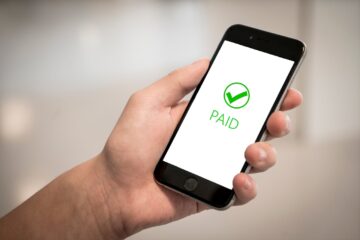Most of us can agree that spending money has never been easier. With one click online, a tap of a card, or even a glance at a phone, money flows out faster than we even realize. Convenience is wonderful in many ways, but when it comes to financial health, it can also work against us. If you’re trying to save, budget, or pursue debt relief, one of the smartest moves you can make is to set up your life so that spending isn’t quite so effortless. By adding small barriers, you make every purchase more intentional.
Why Adding Friction Helps
Think about it: if grabbing a cookie required a long walk to the store instead of reaching into the cupboard, you’d probably eat fewer cookies. The same logic applies to money. The more steps you put between yourself and a purchase, the more time you have to think through whether you truly want or need it. This moment of pause allows you to separate emotion from action and puts you back in control instead of reacting on autopilot.
Unlinking Payment Methods
One of the fastest ways to cut back on mindless shopping is to remove saved payment methods from your favorite online stores. It may sound small, but the simple act of typing in your card number each time gives you a chance to rethink the purchase. If it feels like too much work, that’s a sign the purchase might not be worth it in the first place. Unlinking payment apps on your phone can have the same effect by giving you that extra step to reconsider.
Using Cash With Purpose
Cards and digital wallets can make money feel abstract, almost like it isn’t real. Cash, on the other hand, has weight. Handing over bills feels different than tapping a card. By designating cash for discretionary categories like eating out or entertainment, you create a natural stopping point once the envelope is empty. This approach doesn’t just make overspending harder—it also makes you more aware of how far your money really goes.
Creating Delays Before Purchases
Impulse buying thrives on instant gratification. A powerful strategy is to implement a waiting period rule for nonessential purchases. For example, wait 24 hours before buying something under $100, and a week for bigger items. More often than not, you’ll find the initial excitement fades and you no longer feel the urge to buy. This intentional delay helps prevent regrets and keeps your money working toward your bigger goals.
Blocking Easy Access to Shopping
Another tactic is to reduce the cues that trigger shopping in the first place. Unsubscribe from promotional emails, delete shopping apps from your phone, and limit browsing “just for fun” on retail websites. Out of sight often means out of mind. Without constant reminders of sales or new products, you’ll feel less pressure to buy things you don’t truly need.
Setting Spending Boundaries
Sometimes it helps to create a clear boundary that makes spending less convenient. Lower your daily spending limit on your debit card or ask your bank to send alerts for every transaction. These small safeguards act like speed bumps, slowing down spending and reminding you that every swipe has a consequence. If you’re serious about long-term financial health, these friction points create the accountability you might otherwise lack.
Enlisting Support Systems
Making spending harder doesn’t have to be a solo project. You can bring others into your system for accountability. This could be a partner, friend, or even a financial coach who helps you stick to your boundaries. Some people even use joint accounts for shared goals so they think twice before withdrawing money. When you know someone else will see the transaction, you’re more likely to stop and consider whether it’s necessary.
The Bigger Picture: Freedom Through Discipline
At first, making spending harder may feel restrictive, but in reality, it’s the opposite. Every unnecessary purchase you avoid gives you more freedom in the future. By saving money now, you create space for bigger goals like travel, education, or buying a home. If you’re working on debt repayment, these habits speed up your progress and reduce stress over time. What may feel like inconvenience in the moment actually builds long-term ease and peace of mind.
Conclusion: Protecting Yourself by Slowing Down
We live in a world that makes spending effortless, and that ease can quietly sabotage even the best financial intentions. By creating small barriers—unlinking cards, using cash, setting waiting periods, or cutting off shopping triggers—you reclaim power over your money. These steps aren’t about denying yourself; they’re about making sure your spending aligns with what matters most. In the end, making spending harder is really about making life easier, because financial stability and peace of mind are worth every pause along the way.




